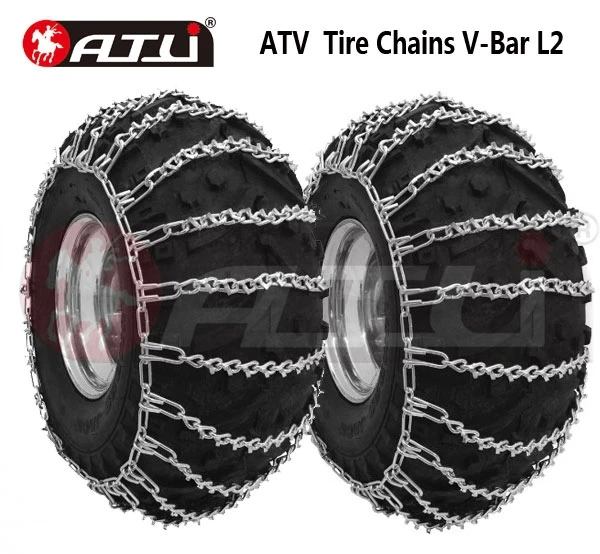Installing chains on your ATV may seem a bit tricky at first. But as long as you know the steps involved, including a few key success criteria, its actually not that hard.
I made this step-by-step guide so that anyone should be able to install ATV chains on their bikes. For those with some previous chain installing experience, you may even find a few tricks for an even faster and snugger install.
The guide fits both ladder-style chains and diamond-style chains.
My personal experience with installing tire chains began over 15 years ago. I had to install chains on the tractors on the farm every winter. Ive also been using chains on my ATV for the last couple of seasons.
Page Contents
Take a note of the size of your tires. This number will be marked on the side of the tire.
ATV tire chains come in several different sizes, where each size is made to fit a range of tire sizes.
You should generally have no problems finding chain-sizes that fit your specific tire size. But sometimes there is necessary to make a small modification to the chain to get a snug fit.
You will need just a few tools to install ATV tire chains:
Most ATVs are actually not designed with the use of tire chains in mind. Many bikes do not have enough space in the wheel wells for the tires to spin freely when chains are fitted.
The front wheels are often the ones causing problems because of the space needed for turning.
There are no clearance issues on my Polaris Sportsman after installing two-inch spacers on all four wheels.
As a general rule, I recommend a minimum clearance of two inches anywhere around the wheel.
This also includes the distance between the tires sidewall and any fragile components like the brake-lines or plastics. Ensure you also measure the clearance when turning the wheel completely to the left and the right.
Because you have limited space, it is crucial to achieving a really snug fit when you install the chains.
This will keep the chains as close to the tires as possible. Thus needing less space around them without running into any collision issues.
If the chains are fitted too loose, they can cause severe damage to the bikes brake lines, fenders, suspension, exhaust, or other parts that get hit.
This is especially true when riding at some speed. The centrifugal forces involved will sling the chains outward from the tire. Thus, needing much more space than if the chains were installed snug.
But sometimes, a snug fit will not be enough to give you enough clearance.
By installing wheel spacers, you move the wheels outward. This creates more space on the inside of the tire.
Wheel spacers will give you better clearance.You can either use special spacer bolts or a one-piece wheel spacer made out of metal. The spacer bolts are the cheapest option. But proper wheel spacers are generally a bit stronger. So they are what I recommend getting.
Wheel spacers come in different sizes, adding anything from ½ - 2 or even 3 inches of extra space on each tire. A spacer width of about 1,75 - 2 inches will be enough in most cases.
Going too wide will only add unnecessary strain on the bikes bearings and suspension. This is not recommended.
During the installation process, you will be pushing the ATV slightly forward. This will be a lot easier if you have some sort of hard, smooth surface to work on. A concrete driveway or a garage floor is ideal.
Working on a clean hard surface will also make the whole process a lot more enjoyable.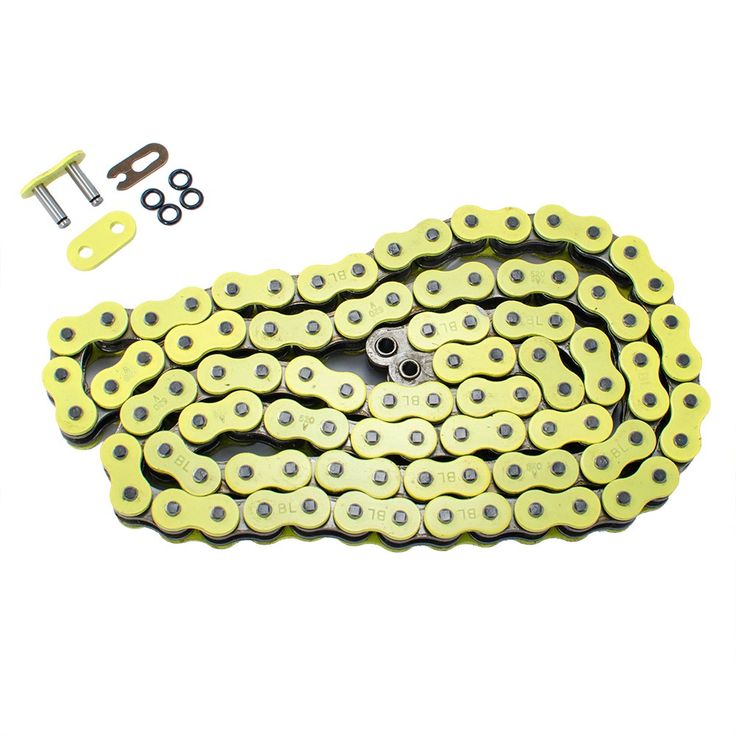 You wont have any wet mud or gravel that will make your hands cold and your clothes dirty.
You wont have any wet mud or gravel that will make your hands cold and your clothes dirty.
In a pinch, its no problem installing tire chains out in the woods, neither. Its just a bit messy and requires some more fiddling to get a good result.
Put the bike in neutral to roll freely, but leave the parking brake on for now.
The easiest way to assure a snug fit is by deflating the tires slightly before installing the chains. And then, after the chains are in place, you inflate the tires again.
Dropping 3-4 PSI should be fine. Some even prefer deflating them completely to achieve a very tight fit.
Use a valve tool to speed up the process. Or you can push down the little pin inside the tire valve - if you have the patience.
Slightly deflate the tire using a valve stem core removal tool.Valve stem removal tools are cheap and can be bought at most auto supply stores or tire shops.
Caution! Its important to know that this procedure for snugging up the chains is not risk-free.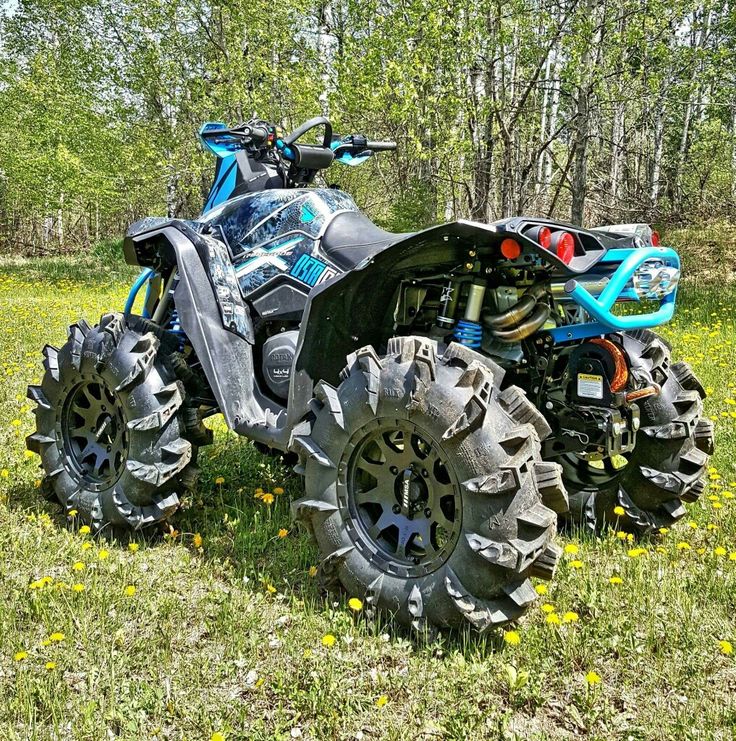 If you do it incorrectly, or if the chains are weak or damaged, they may break, and the tire may blow up. You should never do this on weaker chains like ordinary truck chains.
If you do it incorrectly, or if the chains are weak or damaged, they may break, and the tire may blow up. You should never do this on weaker chains like ordinary truck chains.
However, most quality ATV chains should be strong enough to handle this procedure, as long as you dont overdo it.
If you are not confident that you can keep track of how tight the chains get when re-inflating the tires, you should skip this step.
Instead, you should use other means of keeping the chains snug. Installing chain tensioners is a good option.
Lay the chain flat behind the rear tire and remove any twist and tangles. For the front tires, you lay the chains in the front of the tire.
The studs (the aggressive side of the chain) and the ends of the cross-chain hooks should be facing upwards.
Lay the chain flat behind the tire. Studs should be facing up.At one end, you will find a boomer fastener on one side and a C-hook on the other. Or, on some models, you will find a boomer fastener on both sides and no C-hook.
Or, on some models, you will find a boomer fastener on both sides and no C-hook.
Ideally, you should orientate the chain so that the „bend of the boomer fastener is facing forward in the tire rotation direction. This lessens the chance of it coming unloose when riding in deep snow and mud or from debris rubbing against the tire.
Boomer fasteners do, however, need more space than a C-hook. If space is limited, its better to orient the chain so that the boomer fastener is outside of all tires, even if that means that the bend of the fastener is facing backward on one side of the bike.
There are ways you can prevent the fastener from coming undone, like adding a strong zip-tie.
If the type of chain you have uses boomer fasteners on both sides, lay the chains with the boomers facing forward. This will ensure correct installation.
On diamond pattern chains, you will find a set of shackles at one end of the chain. Remove these and set them aside for now.
Remove shackles and set them aside.
I find that its easier to keep the chain nice and straight if you drag them straight from the front or from the behind of the tire. Or, you can lift them over the tire from the side.
Its really a matter of personal preference.
Use both hands to slightly lift and adjust the chain sideways so that the same amount of chain hang down on each side of the tire. It needs to be in the center of the tire.
The studs and the ends of the cross-chain hooks should be facing up and away from the tire. Untwist any twists so that the chain is laying as smooth against the tire as possible.
If any sharp parts of the chain are in direct contact with the tire, it will soon start wearing on the tire. After a while, this can cause a flat or even a blowout.
The front end of the chain should now be at about ground level. Tuck this end in under the front of the tire to be ready for the next step that is rolling the bike forward.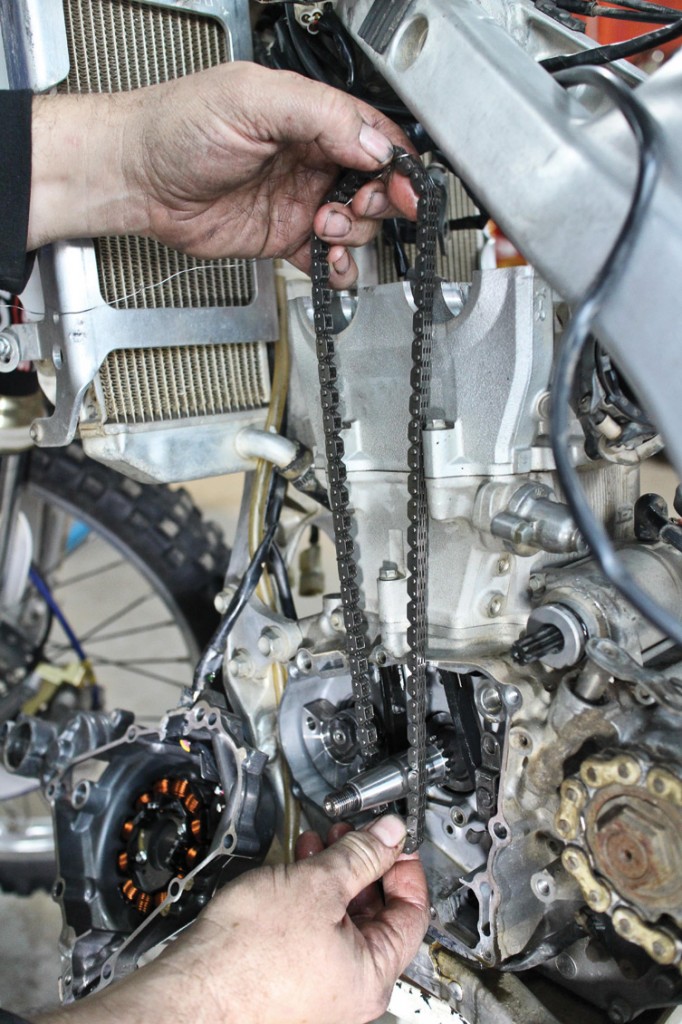
Release the park brakes so that the bike rolls freely.
You may also start the bike and ride it if you need to. But this will leave you with less control of the positioning of the chain.
If needed, stop and make adjustments to the chain to sit as tight as possible on the tire and stay in the center.
Continue moving the bike until about 15 inches of the chain lay behind the tire. The other end of the chain should now be hanging freely at about 2 oclock on the tire.
The chain is in position and ready to be connected.In this step, it is crucial to make sure both the inner and outer chains are the same length.
If one side ends up being shorter, it will be tighter than the other side.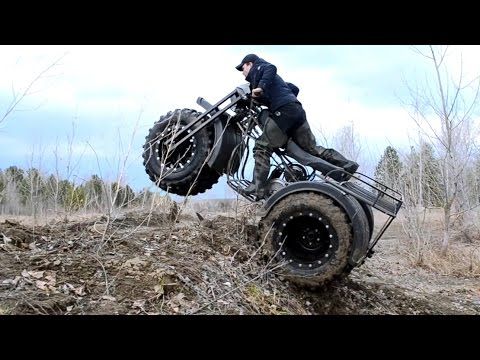 This will drag the chain over to whatever side is tighter when you ride.
This will drag the chain over to whatever side is tighter when you ride.
Grab the 15 inch part of the chain that still lays flat on the ground and lift it against the end that hangs at 2 oclock. You will be connecting the side chains that go all around the tire.
At one end, there will be a fastener (boomer or C-hook, depending on the model). At the other end, there will be some free links available.
Connecting a C-hook:
Connecting a boomer fastener:

Start with the inside fastener. Try to get the chain as tight as you can while still keeping it at the center of the tire. The leftover links should be facing away from the tire. Make sure nothing gets twisted.
Then move on to the outside fastener. Use the same number of links as you did on the inside.
If the chains you are installing are ladder chains, you can skip step 8.
If the chains you are installing are diamond pattern chains, you will find that you still have two loose ends of chain at one end. At the other end of the chain, you will have two metal rings.
Grab the loose chains and thread them up through each of their rings ring from underneath. Tighten until the chain is snug. Then pull one of the tail ends over to the side chain.
Connect the tail ends to the side chain using a shackle.Make sure that all studs are facing outward and everything lays as flat to the tire as possible.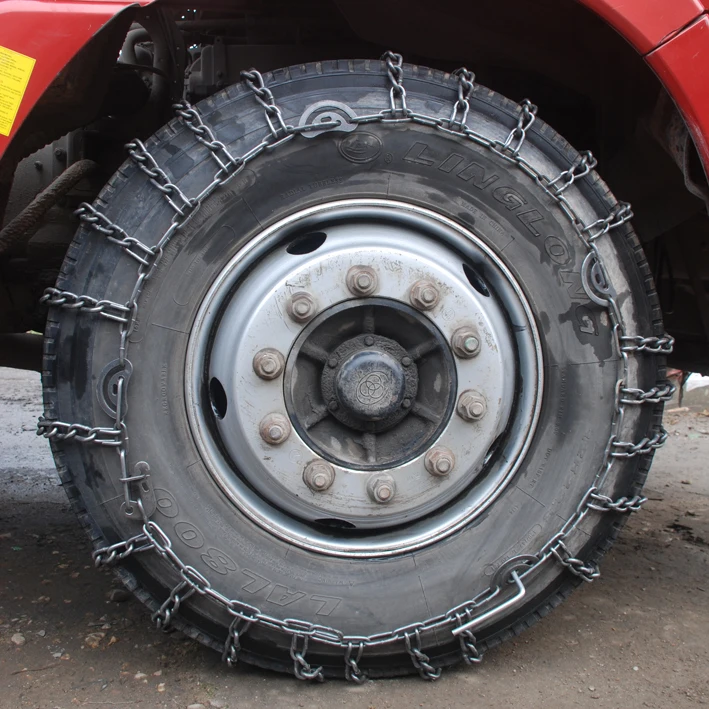 Any twist and bumps will make the ride a lot more uncomfortable and may cause premature wear to the chain and tire.
Any twist and bumps will make the ride a lot more uncomfortable and may cause premature wear to the chain and tire.
Tighten about as much as you did on the two side fasteners so that it feels snug. Connect the tail end to the sidechain using one of the small shackles you removed in step 3. Tighten the shackle only by hand for now.
Tighten the shackle by hand for now.Count the number of tail links from the one that youve already connected. Then repeat the process with the remaining tail end on the other side of the wheel. Use the same number of tail links on this side as well.
Some chain kits come with shackles included. If your kit didnt, or if you have lost them, you can get new ones for cheap at most hardware stores. Get one with about the same thickness as the chain links; 4-6mm is common.
Both tail ends are now tightened and fastened.Then repeat steps 3 - 8 with the remaining tires.
Now its time to put air back into the tires. Use a pressure gauge to keep track of much air you are adding.
Use a pressure gauge to keep track of much air you are adding.
As you put more air into the tires, the chains will tighten up. Ideally, they should become tight/snug just before you reach your desired tire pressure.
Inflate the tires again. Be careful so that you dont overinflate!If you had tightened the chains too much before you started inflating the tires, they might become too tight. Do not overinflate. Doing so could potentially break the chains and have the tire explode with a force so powerful it can cause severe injury.
If the chains are getting tight before reaching about 75% of proper air pressure, do not continue. Deflate the tires and loosen the chain by one link on each side. Then inflate again.
Now its time to test your installation. Start by riding very slowly to make sure nothing is catching.
Then take some turns to see if youre still good when turning the wheels to the max. Do not ride faster than about 5mph on your test ride.
In fact, never go fast. Chains are for slow riding.
The ride doesnt have to be so long; a couple of runs up and down your driveway is fine. You only need the chains to „slip in place, which will happen naturally when the wheels rotate.
This will often allow you to re-tighten the chain when you get back from your test ride. One more link on each of the tighteners is normal.
It does require some work to deflate, tighten and re-inflate the tires once more. But it may be necessary to get the snug fit you need.
Now tighten all shackles using some pliers or a wrench.
Any loose ends of the chain need to be securely fastened. If not, they will quickly damage your fenders or other components of the bike.
You can retain the piece of chain thats left by the boomer tensioners onto the arm of the fastener itself.
In this pic, the free links of the chain are hooked onto the boomer fastener.The free links of chain by the C-hook also need to be fastened.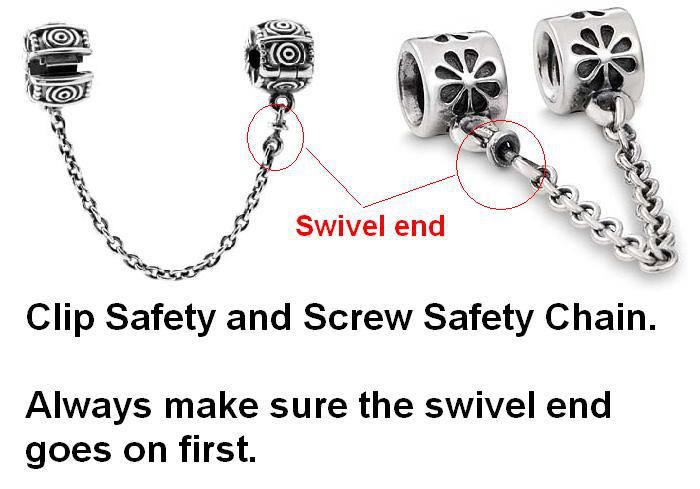 Use a heavy-duty zip-tie or preferably a shackle. You can use this method to fasten all free links of chain if thats what you prefer.
Use a heavy-duty zip-tie or preferably a shackle. You can use this method to fasten all free links of chain if thats what you prefer.
As a final option, you can cut them off using an angle grinder.
But doing so does come with the disadvantage of making the installation a bit harder the next time. You will also lose the possibility of using the chains if you later decide to get slightly bigger tires.
Now you are done!
If you do not like the potential risk involved with using tire pressure to snug up the chains, there are other ways. You can get almost the same effect by adding chain tensioners. It will keep the chains centered on the wheel and keep them from sliding around.
Be aware that you should not install these until after taking a test ride and re-tightened the chains.
Chain adjusters are springs or rubber bands with small hooks on each end. They are made as a star pattern where each spring connects to the side chain.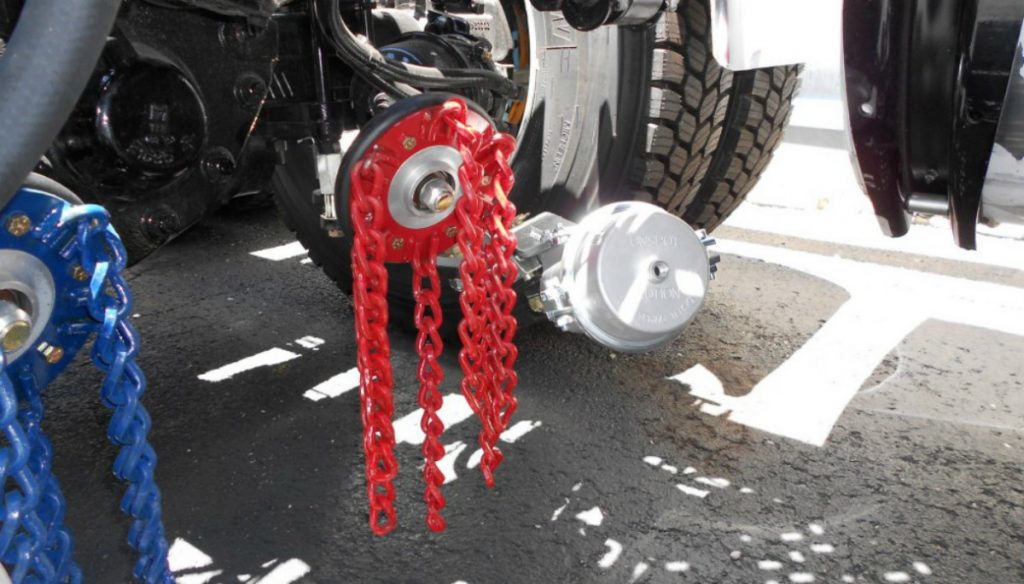 4-6 spring-loaded „arms are common.
4-6 spring-loaded „arms are common.
You can also use a basic bungee cord installed in a star pattern to get the same effect.
You should add a tensioner both on the inside and on the outside of each tire. This will stretch the chain towards the center of the tire and keep it snug at all times.
Sometimes you wont be able to find chains that fit your tires. Or you may have bought a new ATV with smaller tires than the one you had before.
Also, when the chains have been used for some time, they will wear and stretch out. Painted chains will stretch just from wearing down the paint. The paint is not thick, but it adds up when counting every link on the chain.
So at some point, you may need to shorten the chains. This is just a part of owning chains for any vehicle.
All you need to achieve this is an angle grinder or some good bolt cutters.

You need to cut away at least one complete „diamond to get a good result on diamond-shaped chains.
How do ATV tire chains work?
ATV tire chains have sharp studs that penetrate the ice for better grip. Because of the aggressive pattern they provide, they also improve traction on compact snow and gravel.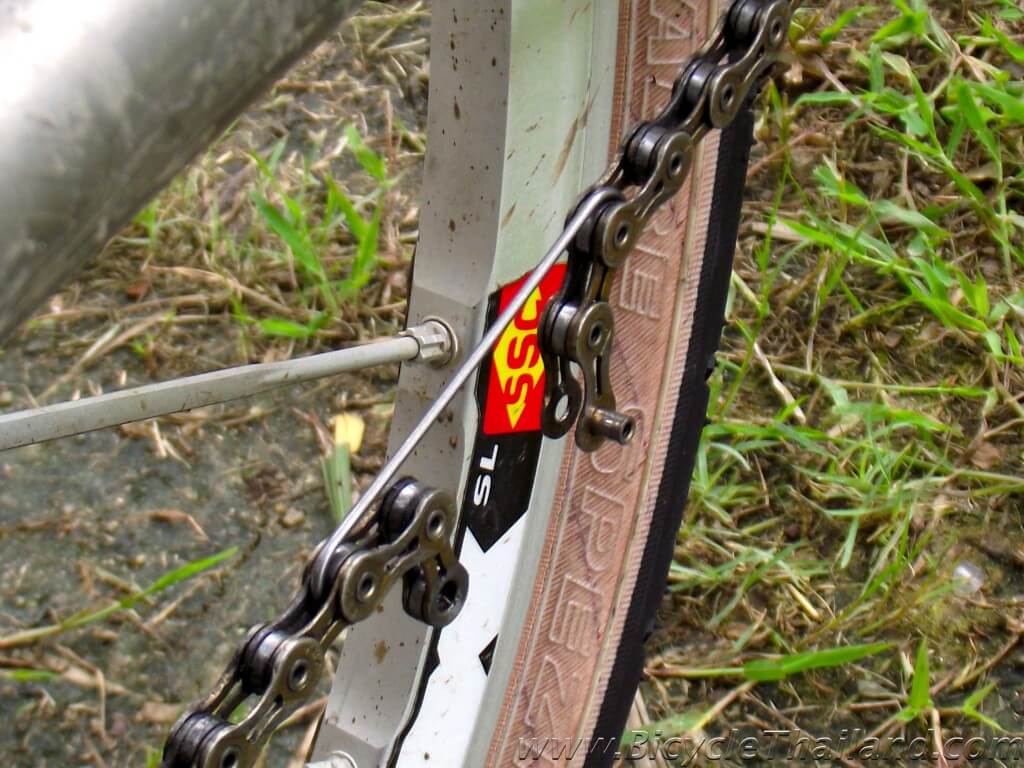 They are not made to be used at any kind of speed.
They are not made to be used at any kind of speed.
How long do ATV chains last?
ATV tire chains life expectancy heavily depends on factors like surface hardness, speed, and proper installation. Snugly fitted chains will last about twice as long as loosely fitted chains. Using chains on hard surfaces like concrete or asphalt will wear much faster.
How to tighten ATV tire chains?
ATV tire chains can be tightened by adding chain adjusters to both the inside and outside of the wheel. Many prefer attaining proper chain tightness by slightly deflating the tires before installation. After installation, they are re-inflated. This procedure requires caution.
How to repair a broken ATV tire chain?
When a link breaks on the ATV tire chain, use a pin connector to replace the broken link. This repair will make the chain just as strong as it was originally.
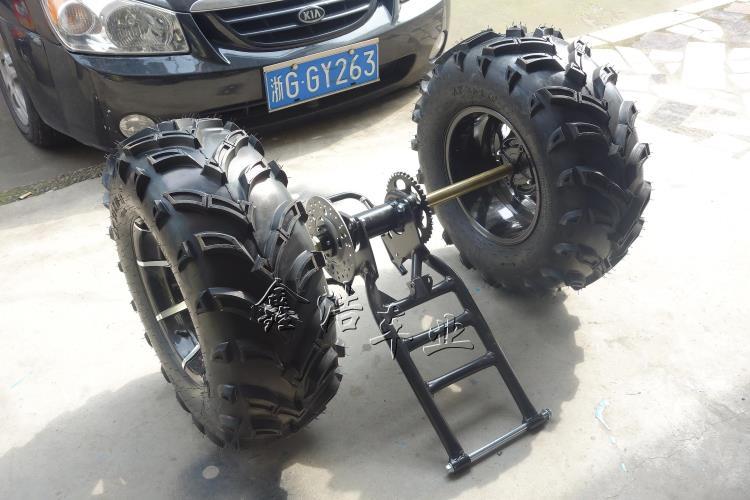
Installing tire chains on an ATV is no joke. However, if you're going to ride your ATV on snow, you should know how to put tire chains on your ATV.
To correctly put tire chains on your ATV, you need to follow these steps in the right order: park your ATV, deflate the tires, lay the chains on the ground, drag the chain over the tire, roll the ATV, connect the fasteners, and finally, connect the tail ends of the chains.
Installing tire chains on an ATV is something you need to know if you're going to drive your ATV in snowy or slippery conditions. Most people don't know how to do this, or they go about it the wrong way. Well, that ends with this simple how-to guide.
To give you the best information possible, our experts have laid out a simple step-by-step guide that will help you install your tire chains the right way. So, without further ado, let's get into it.
If you are new to ATV riding, especially if you're riding in snowy conditions, then one of the first questions that will come to your mind is, "how can I get a safe grip on the road while driving my ATV on snow or ice?" Well, the short answer is – you use tire chains. So, what are tire chains? Tire chains are the length of the chain links or the cable that fits around the tire of an ATV. These chains serve up that extra traction and grip that's required to drive on snow or ice.
So, what are tire chains? Tire chains are the length of the chain links or the cable that fits around the tire of an ATV. These chains serve up that extra traction and grip that's required to drive on snow or ice.
You might also want to use tensioners to ensure that the chains remain in place while driving through snow or ice. Some of these tensioners come in the form of star-shaped rubber bungee types, while other chains come along with specially designed tightening cams placed on the chain itself, which are used to pull tight the chains once they have been placed on to the tires.
It goes without saying that tire chains are, by far, one of the best ways to make sure that you are able to drive your ATV safely and have more control over the vehicle as you move through snow and ice. So, the next time you see an ATV drive by during winter with chains on the tires, you know exactly what they're there for.
Tire chains come in two types, the lighter tire chains are cheaper, while the heavier tire chains are designed to go the distance and come with a higher price tag. It should also be noted that different chain styles and types are used for different vehicles. For instance, tire chains used in cars are considered to be much cheaper than the large chains used on SUVs, graders, or even ATVs.
It should also be noted that different chain styles and types are used for different vehicles. For instance, tire chains used in cars are considered to be much cheaper than the large chains used on SUVs, graders, or even ATVs.
Best ATV Tire Chains
Tire Chain Types and Shapes
So, it's best to keep the vehicle in mind when selecting a tire chain. It is also crucial to make sure that you get the right size tire chain for your ATV since a smaller size won't fit on a bigger tire, and getting a large size is only going to make the tire chain sit loose or lug on the tire, which can be equally bad for driving.
Before you can begin with the ATV tire installation process, you will need to make some preparations for the task at hand. The following are some of the factors to consider when it comes to installing a tire chain on an ATV:
The first factor that you will need to consider when installing an ATV tire chain is getting the appropriate size. This cannot be stressed enough since a smaller chain will not fit the tire size, and getting a tire chain that's too large will end up hanging loose on the tire and will not be able to provide the necessary traction that's needed to drive through snow, ice or slippery terrain. This is why it is crucial to make sure that you get the size of the ATV tire chains that you are about to install on your ATV right.
This cannot be stressed enough since a smaller chain will not fit the tire size, and getting a tire chain that's too large will end up hanging loose on the tire and will not be able to provide the necessary traction that's needed to drive through snow, ice or slippery terrain. This is why it is crucial to make sure that you get the size of the ATV tire chains that you are about to install on your ATV right.
The easiest way to find out the right tire chain size for the ATV you drive is by looking at your tires (sounds obvious, but it's more technical than that). Most ATV tires have the size inscribed on the sides, making it easier for you to find the correct size tire chains for your ATV. The good news is, you can easily find the right tire chain for your ATV by either searching online or going to the local brick-and-mortar store. Since there is no dearth of tire chain manufacturers out there, it should not be a problem to find the correct size tire chain for your tires.
While some folks might want to go to the mechanic to get their tire chains installed, most people would rather go the DIY route.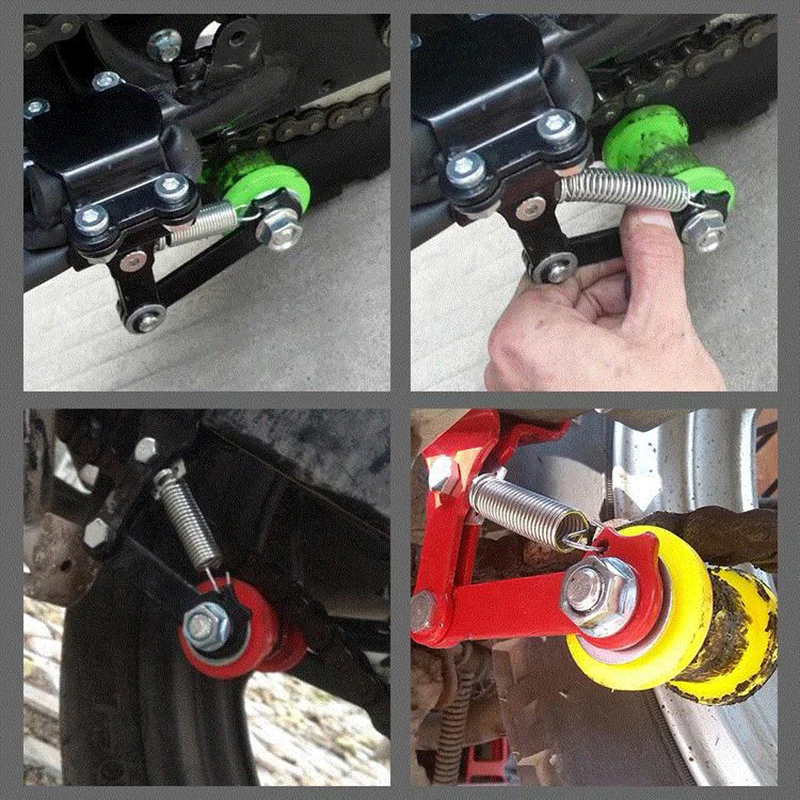 If you are one of them, you need to have the correct tools on hand to install tire chains on your ATV. Some of the tools that you are going to need to install tire chains on an ATV include a wrench, angle grinder, zip ties, and if required, a valve system removal tool.
If you are one of them, you need to have the correct tools on hand to install tire chains on your ATV. Some of the tools that you are going to need to install tire chains on an ATV include a wrench, angle grinder, zip ties, and if required, a valve system removal tool.
Because not all ATVs are intended to support tire chains, you must determine if you have enough clearance. By clearance, we mean a minimum gap of two inches on any side of the wheel. If you don't have this area, the chains won't rotate when they are joined to your tires. Your front wheels will cause you trouble because they are the ones that turn. It is also advised to make sure there is enough space between the sidewall of your tire and any other pieces that might break when you spin or move your wheels.
Another thing to consider when putting tire chains on your ATV is wheel spacers. When attaching chains to your tires, they must fit snugly, but if you don't have enough room, you may want to try purchasing wheel spacers. This will help close the space between the chain and the tires, reducing the risk of an accident.
This will help close the space between the chain and the tires, reducing the risk of an accident.
This is important since the critical components of your tire, such as brake lines, etc., will be damaged if the tire chains are not properly attached. When you often accelerate, you will notice this. This might cause the chains to come loose from the tire, so be sure you have enough room. These wheel spacers can assist in moving the wheel to the outside so that more room is available on the inside.
Now that you have got the basics right, it is time to get started with putting the tire chains on your ATV. For that, you will need to follow these instructions carefully to make sure you get it right the first time.
Before you can proceed with installing the tire chains, make sure you've parked the ATV on a smooth, flat surface, such as the garage or driveway. This makes it easier to install the tire chains, and you won't have to deal with any sand or gravel. To be safe, leave the parking brakes on, but put it on neutral so that it can roll easily.
To be safe, leave the parking brakes on, but put it on neutral so that it can roll easily.
The actual process of installing the tire chains begins with slightly deflating and then inflating the tires once the chains are on and secure. For those wondering just how much the tires need to be deflated, a PSI of 3 or 4 should be able to do the trick. You could also deflate the tires completely if you are going for an extremely tight fit. It is recommended to use a valve tool to streamline this process. The good news is that the valve stem removal tool is affordable and can be found easily at the tire shop or auto supply store.
While this procedure should be done with caution when it involves truck chains that are known to be weaker and break easily, ATV tire chains are considered to be much stronger and will handle the procedure. If you are not confident about installing the tire chains this way, then you can always use a chain tensioner instead.
You can lay down the tire chains either in front or at the back of the ATV during the installation process. Also, be sure to settle any tangles or twists in the tire chain. A good rule of thumb is to let the ends of the cross-chain hooks and the studs face upwards. You will find the C-hook on one side and the boomer fastener on the other. It should be noted here that there are some models out there where you will only get a boomer fastener on both sides without the need for a C-hook.
Before installing the tire chain, make sure the bend of the boomer fastener is always facing forward. That's in the direction of the tire's rotation. Doing this will minimize the risk of it coming loose while riding the ATV in mud or deep snow. However, it should also be noted that the boomer fastener you use will require more space as compared to the C-hook.
This is another crucial step since if there is not enough space, you will need to make sure the boomer fastener is outside of all of the tires, regardless of whether the bend of the boomer fastener is facing the other direction on one side of the ATV. Remember those zip ties we included in the list of things you need to install a tire chain in your ATV? Here's where they come in. Adding a zip tie to the mix can prevent the fastener from loosening up while you drive and ensure that everything remains in its place.
Remember those zip ties we included in the list of things you need to install a tire chain in your ATV? Here's where they come in. Adding a zip tie to the mix can prevent the fastener from loosening up while you drive and ensure that everything remains in its place.
For those who are using chains that have boomer fasteners alone, all you have to do is lay down the chains with the boomers facing forward so that the tire chains are installed accurately. If you have bought diamond-patterned tire chains, then remove the shackles that are located at one end for now.
Now's the time to roll those sleeves up and use both hands to drag the tire chain up and over while making sure the chain remains straight. This is why it is recommended to lay down the chain in front of the ATV for the front tires and at the back of the ATV for the back tires.
Again, you will need to use both hands to adjust the tire chains to make sure that the chain is equal on both sides of the tire.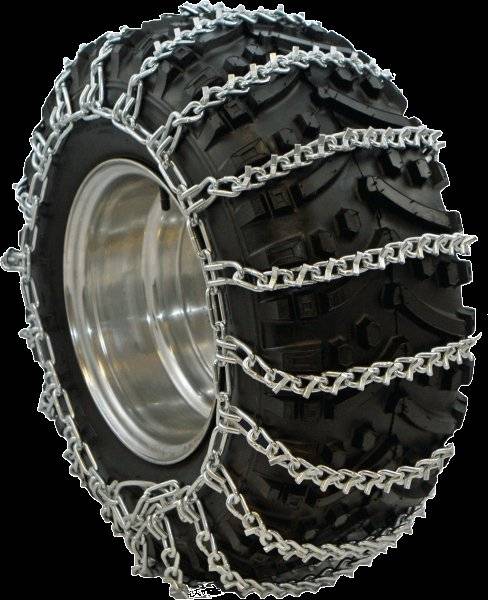 This means the ends of the cross-chain hooks, as well as the studs, need to face upwards and away from the tire. Now, tuck in the front end of the chain under the front of the tire and roll the ATV backwards.
This means the ends of the cross-chain hooks, as well as the studs, need to face upwards and away from the tire. Now, tuck in the front end of the chain under the front of the tire and roll the ATV backwards.
To roll the ATV freely, release the park brakes. You will have to push the ATV forward for the rear tires and backward for the front tires so that the chains are set in place. Don't go all the way, though. Just move the ATV until 15 inches of the tire chain is left on the floor behind the tire.
Connecting the fasteners is another tricky step. Now, take a hold of those 15 inches of chain and lift it against the end that should be hanging at 2 o'clock to connect the side chains going around the tire. You should see some free links on the opposite side of the C-hook or boomer. For those using a boomer fastener, make sure it goes straight through the side chain link and to the bottom of the boomer fastener, and then level it back about 180-degrees to the side chain. This is where it is going to lock in place by using the keeper link.
This is where it is going to lock in place by using the keeper link.
Now that you're done with the fasteners, grab the loose ends (if you're using a diamond-patterned chain) and thread them through the metal rings at the other end of the chain. Do this until you feel that the chain is nice and snug. When that's done, all you have to do is pull one tail end over the side chain and tighten it as much as possible.
Then, start connecting the tail end of the side chain with the help of those small shackles that you just removed. It is important to count the tail links of each of the tires so you get them right. This will ensure that they are balanced.
Now, all you have to do is re-inflate the tires back to their normal PSI, and you're good to go.
Once you've done this, take your ATV out for a short drive and test out the grip. Make sure to listen and feel for any odd movements or loose chains. If you feel that everything is good to go, then enjoy the ride! Make sure to check the chains every now and then to ensure that they're still fastened securely to the tires.
Podolsk,
15 km Simferopol highway To contacts
#service #ATV #stars
7 years ago
Replacing the chain and sprockets on an ATV from a motorcycle is fundamentally no different. If you follow the correct sequence of actions, then this can be done quickly and easily. In the video, we showed the process using the Yamaha Raprot 700 ATV as an example. The article shows the main points that you should pay attention to.
It happens that the nut of the front sprocket sticks and is hard to unscrew, the rear brake may not be enough to block. In this case, it is necessary to spray it with penetrating grease, additionally block the axle with a rod through the eccentric, and use a wrench with a long lever to unscrew it.
In this case, it is necessary to spray it with penetrating grease, additionally block the axle with a rod through the eccentric, and use a wrench with a long lever to unscrew it.
If a standard set of sprockets is installed, the chain length is determined by the manual. If Non-standard, then it is better to determine the length in place with minimal tension. If the chain is closed on different plates (external and internal), you have to add another link to install the lock. It is desirable to increase or decrease the rear sprocket by an even number of teeth, and not change the front one. Stock on yamaha raptor 700 chain 98 links, sprockets 14 and 38 teeth. One sprocket tooth corresponds to half of the chain link, so it is better to increase (decrease) the sprocket by an even number of teeth.
the new chain stretches a little. Chain free play is measured with no load when the ATV is on a level surface with four wheels.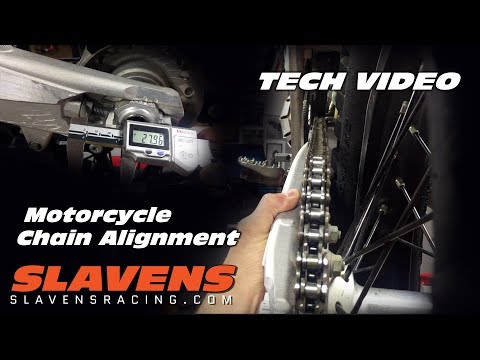
The axle fixing bolts are tightened in a certain sequence with a certain force gradually.
When tightening all bolts and nuts, it is advisable to observe the torques specified in the manual. This is necessary so as not to disrupt anything and securely fix it. The wheel and star nuts are tightened gradually according to the principle "each next opposite the previous one". If the thread is clogged, it must be cleaned! If a torque wrench is not available, it can be tightened by hand with short lever wrenches (with a long lever wrench, the threads can be stripped unnoticed). The front sprocket nut cannot be stripped if the wheel is blocked by the rear brake. With a lot of effort, the brake will turn.
In the video we showed all the main points, we hope it will be useful!
Replacement Sprockets Yamaha Raptor 700
464 978
2 465
0
Recommend
Magazine Training for beginner stunt riders Magazine F4i ZX6R R6 CBR GSXR stunt bike review Magazine Training Motocross Enduro - Video School French Stunt Romain Jeandrot
Chain care (lubrication and tension) is one of the key elements of ATV maintenance.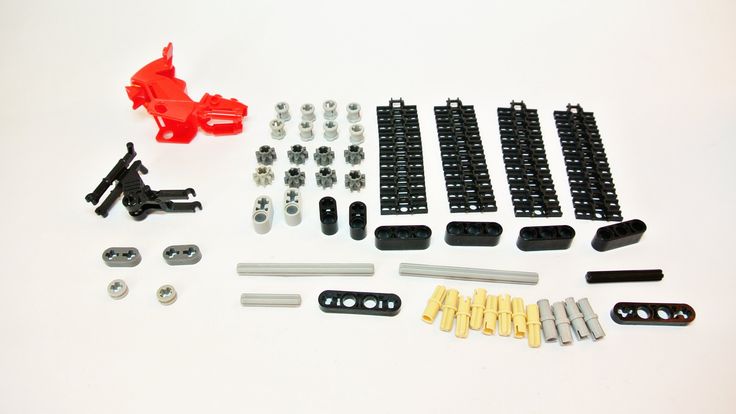 If the rider ignores this procedure, the component will begin to wear and sag, and the sprocket teeth will fail. This will all lead to serious problems and break the element. Therefore, the motorist needs to figure out how to pull the chain on the ATV.
If the rider ignores this procedure, the component will begin to wear and sag, and the sprocket teeth will fail. This will all lead to serious problems and break the element. Therefore, the motorist needs to figure out how to pull the chain on the ATV.
Inspection of the unit is recommended every 2-4 weeks, depending on the operation of the equipment. It may seem like this is quite common, but ignoring the procedure can lead to serious problems. For example, if the chain breaks far from the garage, the rider will have to push the quad home. But this is a trifle, in comparison with the fact that if a component breaks, the crankcase may suffer or the axle may jam.
A critical problem for the chain is:

But how do you know when you need to tighten or replace a chain on an ATV? Everything is simple. The rider needs to grab one link of the chain in the region of the rear sprocket and pull it towards him. If it turned out to pull off more than 4-5 links, then the node needs service.
Even if you have bought a reliable ATV, it is recommended to service the component every 300-400 km. This will not only increase the life of the circuit, but also detect the problem in a timely manner.
Since the quad is used for off-road driving, dust, dirt and moisture are constantly deposited on its nodes. All this leads to increased wear of the elements. By the way, experienced riders advise cleaning and lubricating the chain after each race.
First you need to find the right oil. In principle, even inexpensive lubricants can be used, but they will have to be applied more often. The oil marked "off-road" is best suited for an ATV. Such compounds are designed for off-road driving, and perfectly protect the assembly components from dirt and moisture.
The oil marked "off-road" is best suited for an ATV. Such compounds are designed for off-road driving, and perfectly protect the assembly components from dirt and moisture.
Before putting the chain on the ATV, it must be completely free of dirt. However, for this it is highly recommended not to use aggressive chemicals, hard brushes, solvents or high pressure washing. All this can lead to damage to the rubber seals.
Cleaning can be done:
After the dirt has been removed, the chain must be thoroughly wiped with a soft cloth and dried. Only then can you start lubricating.
It is worth noting that it is recommended to apply oil on a warm chain. But the removal of excess lubricant is carried out with the same soft brush.
ATV chain is recommended to be changed every 500 km. But what to do with an old part that is slightly worn or torn? You can make a spare wheel out of it, after shortening it by 1-2 links. Of course, this "modification" will increase the likelihood of its rupture, but in an emergency, such a spare tire will allow you to get home.
But what to do with an old part that is slightly worn or torn? You can make a spare wheel out of it, after shortening it by 1-2 links. Of course, this "modification" will increase the likelihood of its rupture, but in an emergency, such a spare tire will allow you to get home.
To shorten the chain:
Important: Remember that an old shorter chain will increase the wear on the sprockets.
To tension the chain, the ATV must be parked on a level surface in neutral. The rider should then:
